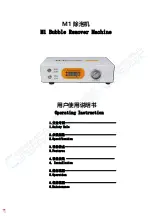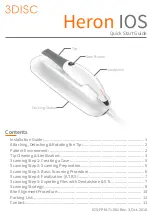
5.4 Tests, personal protection check
5.4.1 Description
EV chargers will always be protected by a residual current device (RCD) or a ground fault circuit interrupter (GFCI).
Both these devices have the same functions, protecting users from electrocution and preventing fault current causing
a fire. They work by detecting an imbalance in the circuit current, if less current returns from the circuit it must be
flowing to ground. If this ground leakage current becomes large the RCD or GFCI will trip.
Personal protection test on the EVCC300 will apply a calibrated ground / earth leakage current matching the rating
of the charger’s protective RCD or GFCI device and then measure how long it takes for the device to trip. This test will
check to see if the RCD or GFCI react fast enough to protect users from electrocution if a charger fault develops.
The EVCC300 can perform four different tests as follows:
230 V Ph to N supply (UK / Europe tests)
30 mA AC, 0° and 180°
Test current:
30 mA + 5% = 31.5 mA
Max. test time:
300 ms
Test result:
RCD trip time
6 mA DC, 0° and 180°
Test current:
Ramp up at a rate of 6 mA in 2.5 s
(to prevent test tripping AC response of the RCD)
Max. test time:
Hold at 6 mA DC for a maximum of 12.5 s
Test result:
RCD trip time
120 V Ph to N supply (USA tests)
6 mA AC, 0° and 180°
Test current:
6 mA
Max. test time:
5.59 s
Test result:
RCD trip time
20 mA AC, 0° and 180°
Test current:
20 mA + 5% = 21 mA
Max. test time
5.59 s
Test result:
RCD trip time
Fig 3:
Pass screen
Questionable results
Fail screen
20
Tests
www.calcert.com
1.800.544.2843
0
5
10
15
20
25
30
















































